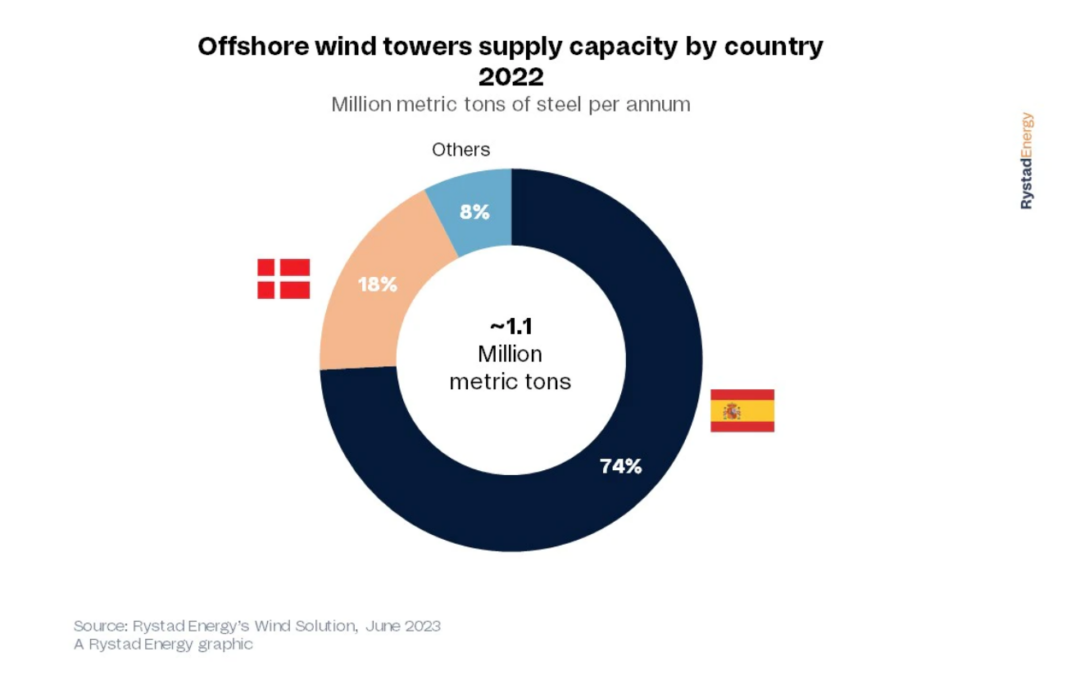Marine wind energy, key in Europe’s energy transition, is facing a supply challenge. According to models from Rystad Energy, the demand for marine turbine towers is predicted to exceed production capacity by 2028. In this scenario, Spain leads with a staggering 74% production capacity dominance, followed by Denmark with 18%1.
To avert a supply deficit, European manufacturers must begin expanding their facilities within the next two years, as constructing a new tower manufacturing plant can take up to three years1.
The steady growth in turbine size, driven by the increasing importance of marine wind energy for the global electric grid, forecasts an increase in tower demand. This trend presents a golden opportunity for manufacturers, provided they can expand their capacity in time1.
The average capacity of turbines in Europe is expected to reach nearly 10 MW by 2023. However, it is estimated that 50% of the turbines installed between 2029 and 2035 will be 14 MW or larger, with some projects planning to construct 20 MW turbines in the early 2030s. As the rotor size increases, so does the turbine size and the need for larger towers, especially in Europe, where marine wind energy developers have requested turbines of 12 MW or more for their projects1.
Therefore, the timely expansion of turbine tower production capacity is critical to meet the growing demand and ensure the success of the energy transition in Europe.
